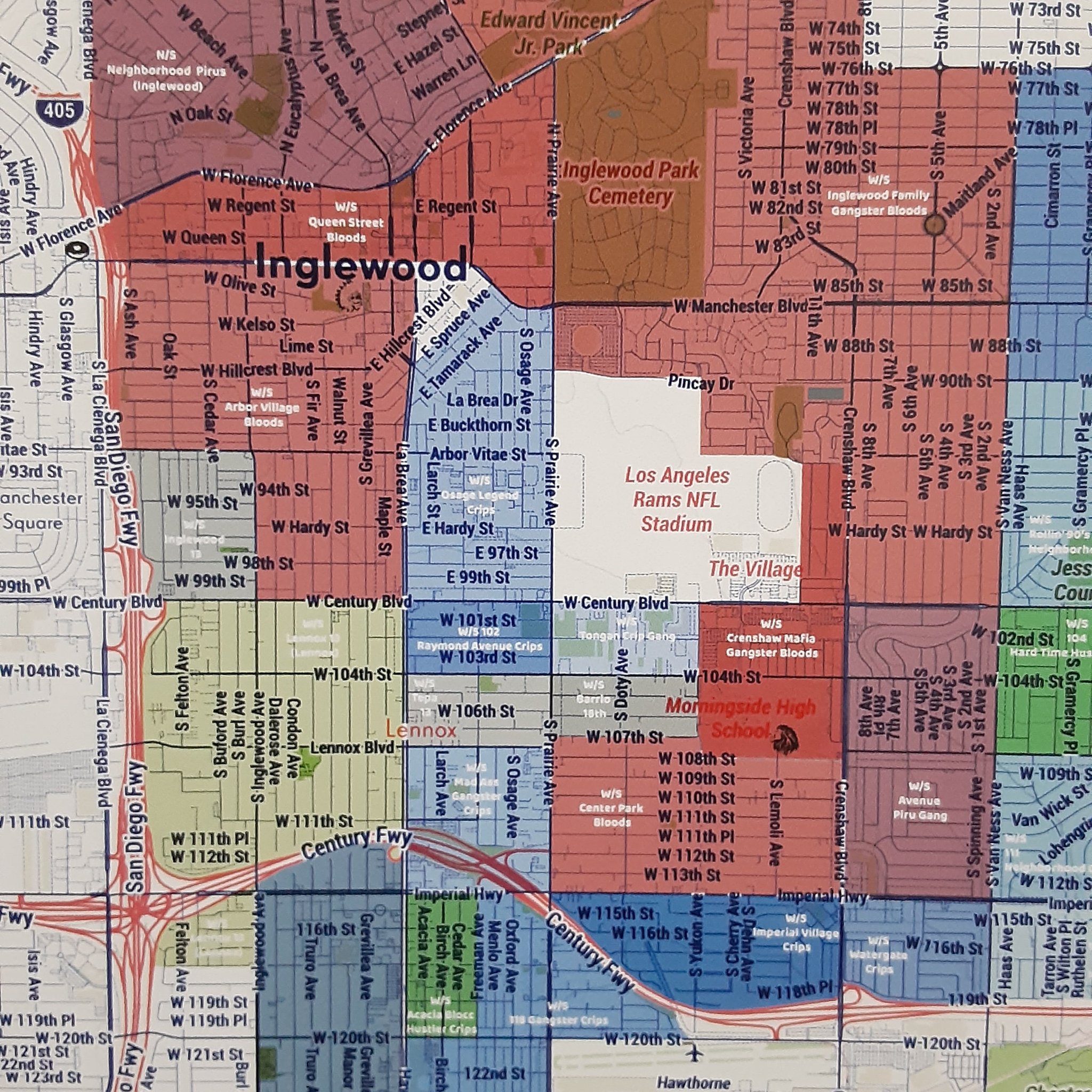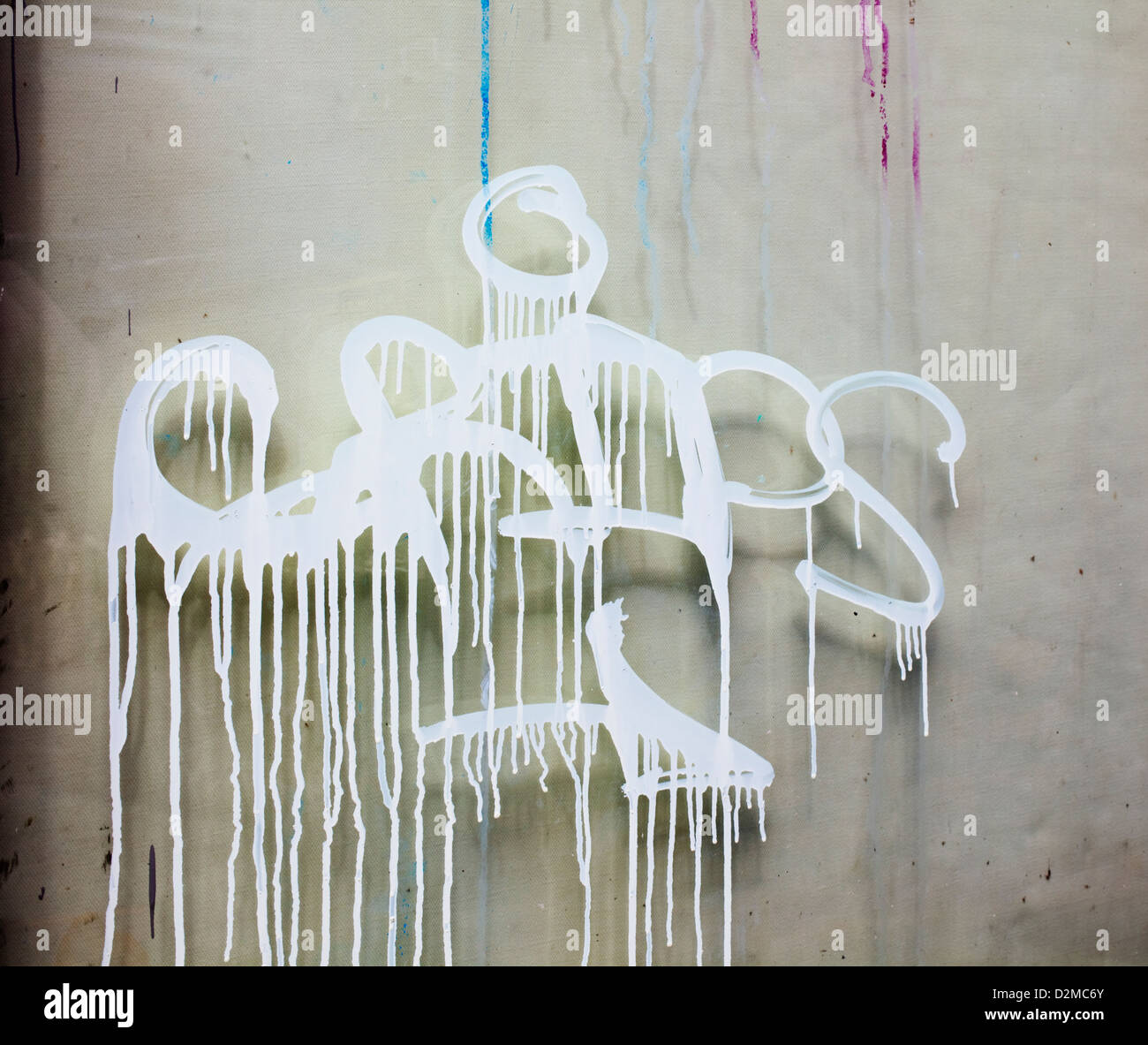Crips Territory Map: A Deep Dive Into The Landscape Of Crips Influence
When it comes to understanding the Crips territory map, you're diving into a world that's as intricate as it is intense. The Crips, one of the most infamous street gangs in the United States, have carved out their own territories across the nation, and their influence extends far beyond the streets of Los Angeles where they originated. This map isn't just about locations; it's about power, control, and a complex network of alliances and rivalries that shape the urban landscape.
Picture this: a sprawling city where every corner has a story, every alleyway holds secrets, and every neighborhood is marked by invisible boundaries. The Crips territory map is like a puzzle, where each piece represents a different set of rules, traditions, and rivalries. Understanding it isn't just about knowing where the Crips operate; it's about grasping the social, economic, and historical factors that have allowed them to thrive.
Now, before we dive deep into the map itself, let's set the stage. The Crips aren't just a gang—they're a phenomenon. Their influence stretches from coast to coast, and their impact on American culture, music, and society is undeniable. So, whether you're a researcher, a journalist, or just someone curious about the darker corners of urban life, this article will give you the insights you need to make sense of the Crips territory map.
Understanding the Crips: A Brief History
Before we can talk about the Crips territory map, we need to understand who the Crips are and how they came to be. The Crips were founded in 1969 in South Central Los Angeles by Stanley "Tookie" Williams and Raymond Washington. At the time, they weren't about crime—they were about protection. The streets of LA were dangerous, and these young men wanted to create a safe space for their community. But as time went on, the focus shifted, and the Crips evolved into one of the most powerful and feared gangs in the country.
Here's the kicker: the Crips aren't a single entity. They're a collection of smaller sets, each with its own leadership, territory, and rules. This decentralized structure makes them incredibly resilient and adaptable. Think of it like a franchise—each set operates independently, but they all share the same brand, the same colors, and the same reputation.
And let's not forget the rivalry with the Bloods. This isn't just a gang war; it's a cultural divide that has shaped the landscape of urban America. The Crips wear blue, the Bloods wear red, and the tension between them is as old as the gangs themselves. This rivalry is a key factor in understanding the Crips territory map, as it often determines the boundaries between different neighborhoods.
Key Events That Shaped the Crips
- 1969: The Crips are founded in South Central LA.
- 1970s: The Crips expand rapidly, establishing sets across California.
- 1980s: The crack epidemic fuels gang activity, increasing the Crips' influence.
- 1990s: The Crips become a national phenomenon, with sets appearing in cities across the US.
Mapping the Crips: An Overview
Now that we've got the history out of the way, let's talk about the map itself. The Crips territory map is a dynamic, ever-changing entity. It's not a static image you can pin to a wall; it's a living, breathing thing that responds to shifts in power, economics, and law enforcement. Think of it like a game of chess, where every move affects the board in ways you might not immediately see.
One of the biggest challenges in mapping Crips territory is the sheer number of sets. There are hundreds of them, each with its own turf. Some sets are small, controlling just a few blocks, while others dominate entire neighborhoods. And here's the thing: these boundaries aren't always clear-cut. They can shift overnight, depending on who's in power, who's making alliances, and who's looking for revenge.
Another factor to consider is the role of law enforcement. Police crackdowns can disrupt the balance of power, forcing sets to relocate or merge with others. This constant state of flux makes the Crips territory map a fascinating, if somewhat daunting, subject to study.
Key Factors Influencing the Map
- Set size and influence
- Law enforcement activity
- Economic conditions in the area
- Rivalries with other gangs
Crips Territory Map: The Major Cities
Let's zoom in on some of the major cities where the Crips have a significant presence. Each city has its own unique dynamics, shaped by local factors like population density, economic conditions, and law enforcement strategies. Here's a quick rundown:
Los Angeles: The Birthplace
LA is where it all began, and it remains the heart of Crips territory. The city is home to dozens of sets, each with its own turf. From South Central to Compton, the Crips have left their mark on the urban landscape. But don't be fooled—this isn't just about gangs. The Crips in LA are deeply intertwined with the city's culture, politics, and economy.
Chicago: The Windy City
Chicago has its own gang landscape, but the Crips have carved out a significant presence here. The city's tough winters and harsh economic conditions have created fertile ground for gang activity, and the Crips have capitalized on this. Their influence in Chicago is a testament to their adaptability and resilience.
New York: The Big Apple
New York is a melting pot of cultures, and the Crips are no exception. While they may not have the same level of influence here as in LA or Chicago, they're still a force to be reckoned with. The city's diverse population and complex social dynamics make it a challenging but rewarding territory for the Crips.
Understanding the Colors: Blue and Beyond
When you think of the Crips, you probably think of the color blue. But there's more to it than that. The blue represents loyalty, unity, and pride. It's a symbol of identity, a way for Crips to mark their territory and show their allegiance. But the colors aren't just about blue—there's a whole language of colors and symbols that the Crips use to communicate with each other and with rival gangs.
For example, the Crips might wear blue bandanas, blue sneakers, or even blue clothing to signal their affiliation. But they also use graffiti, tattoos, and other forms of visual communication to mark their territory. This visual language is a key part of understanding the Crips territory map.
Common Symbols Used by the Crips
- Blue bandanas
- Graffiti with Crips-related messages
- Tattoos featuring blue elements
- Specific hand gestures or signs
The Role of Law Enforcement
Law enforcement plays a crucial role in shaping the Crips territory map. Police crackdowns, gang injunctions, and community policing strategies all affect how the Crips operate and where they choose to establish their turf. In some cases, law enforcement efforts have successfully reduced gang activity, while in others, they've simply pushed the Crips to new locations.
But it's not just about arrests and convictions. Law enforcement also works with community organizations to provide resources and support for at-risk youth. Programs like gang intervention and mediation can help break the cycle of violence and give young people a chance to turn their lives around. This holistic approach is essential for creating lasting change in Crips territory.
Effective Law Enforcement Strategies
- Gang injunctions
- Community policing
- Gang intervention programs
- Collaboration with community organizations
The Impact on Communities
The presence of the Crips has a profound impact on the communities they inhabit. On one hand, they bring fear and violence, creating an environment where residents feel unsafe in their own neighborhoods. On the other hand, they also provide a sense of identity and belonging for some young people who might otherwise feel lost or marginalized.
But the impact goes beyond just the immediate effects of gang activity. The Crips have influenced music, fashion, and culture in ways that have reached far beyond the streets. From gangsta rap to streetwear, the Crips have left an indelible mark on American culture. Understanding this broader impact is key to making sense of the Crips territory map.
Positive and Negative Impacts
- Positive: Cultural influence, sense of identity
- Negative: Violence, fear, economic instability
Future Trends and Predictions
So, what does the future hold for the Crips territory map? As law enforcement strategies evolve and social dynamics shift, the landscape of gang activity is likely to change. Some experts predict that the Crips will continue to adapt, finding new ways to operate in a rapidly changing world. Others believe that increased community engagement and support for at-risk youth could reduce gang activity over time.
One thing is certain: the Crips aren't going anywhere anytime soon. Their influence is too deeply ingrained in the fabric of urban America. But with the right strategies and resources, it's possible to create a future where the Crips territory map is less about violence and more about opportunity.
Key Predictions
- Increased focus on community-based solutions
- Adaptation of Crips to new technologies and social dynamics
- Potential decline in traditional gang activity
Conclusion: What You Need to Know
In conclusion, the Crips territory map is a complex and ever-changing entity that reflects the social, economic, and historical factors that shape urban America. From their origins in South Central LA to their current presence across the country, the Crips have left an indelible mark on the landscape of gang activity. But understanding the map isn't just about knowing where the Crips operate—it's about understanding the broader context in which they exist.
So, what can you do with this knowledge? Start by engaging with your community, supporting programs that help at-risk youth, and advocating for policies that address the root causes of gang activity. Together, we can create a future where the Crips territory map is less about fear and more about hope.
And hey, if you've got thoughts or questions about the Crips territory map, drop a comment below! Let's keep the conversation going and work toward a better future for everyone.
Table of Contents
- Understanding the Crips: A Brief History
- Mapping the Crips: An Overview
- Crips Territory Map: The Major Cities
- Understanding the Colors: Blue and Beyond
- The Role of Law Enforcement
- The Impact on Communities
- Future Trends and Predictions
- Conclusion: What You Need to Know

Gallery Territory at 2920

Bloods And Crips Territory Map vrogue.co

tag on window marking crips territory Stock Photo Alamy